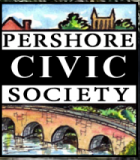Last week, eighteen members of the Coventry Society had a guided tour of Pershore, courtesy of the Pershore Civic Society.
We were greeted by the Town Crier who loudly welcomed us to the town.
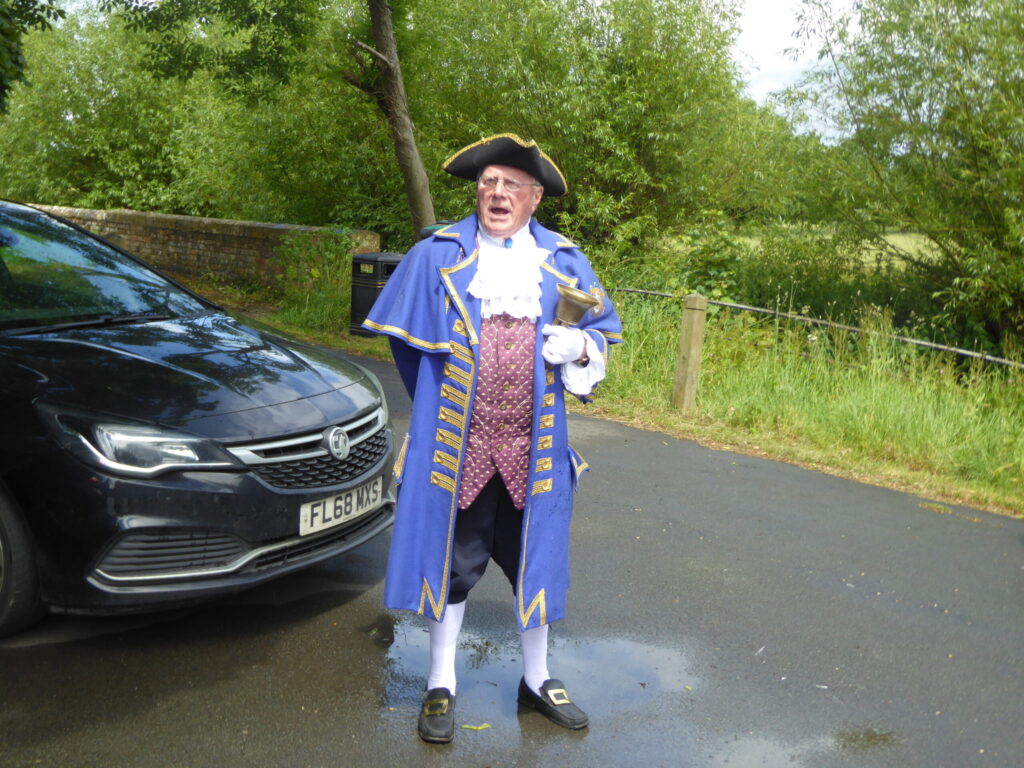
Pershore sits on the River Avon and its bridge, has provided an important crossing point on the river for centuries. Damaged during the Civil War the old bridge is still crossable by pedestrians but vehicles are banned and now use a new bridge.
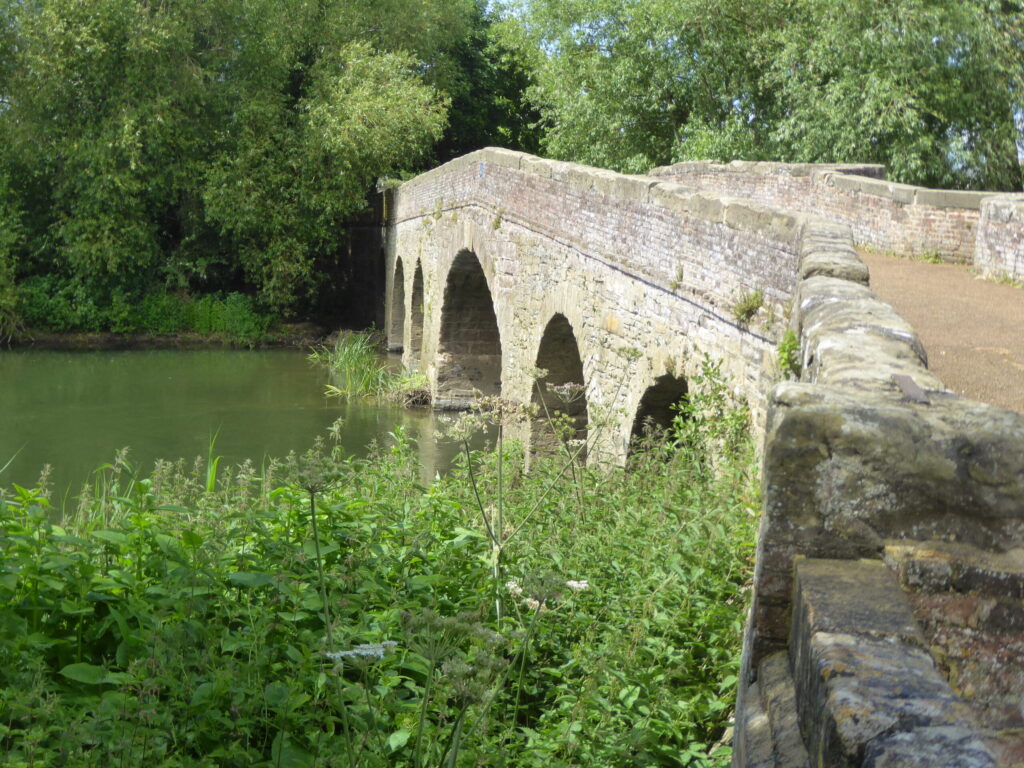
Our walk around the town took us past Pershore’s last remaining Toll House. It still carries its original price chart, which shows a charge of 3d for each calash, chaise or chair drawn by one horse, but free travel on Sundays for people going to and from church.
Although promoting itself as a Georgian market town, Pershore in fact dates back to the Iron Age. There is evidence of Roman occupation and many of the fine Georgian buildings have medieval cellars and other remains within them.
The River Avon is navigable from Stratford through to Tewkesbury and then to the River Severn. Pershore is about half way and includes the deepest lock on the river. Judge Perrott is said to have restored the locks and weirs on the river, laying the foundation to the town’s prosperity in the 18th Century. His house on Bridge Street, dates from 1770 and is Grade 1 listed.
Our guides took us behind the façade of the town’s main street. From the back garden we were able to see the fascinating architecture of centuries past and the long thin burgage plots that are characteristic of the town.
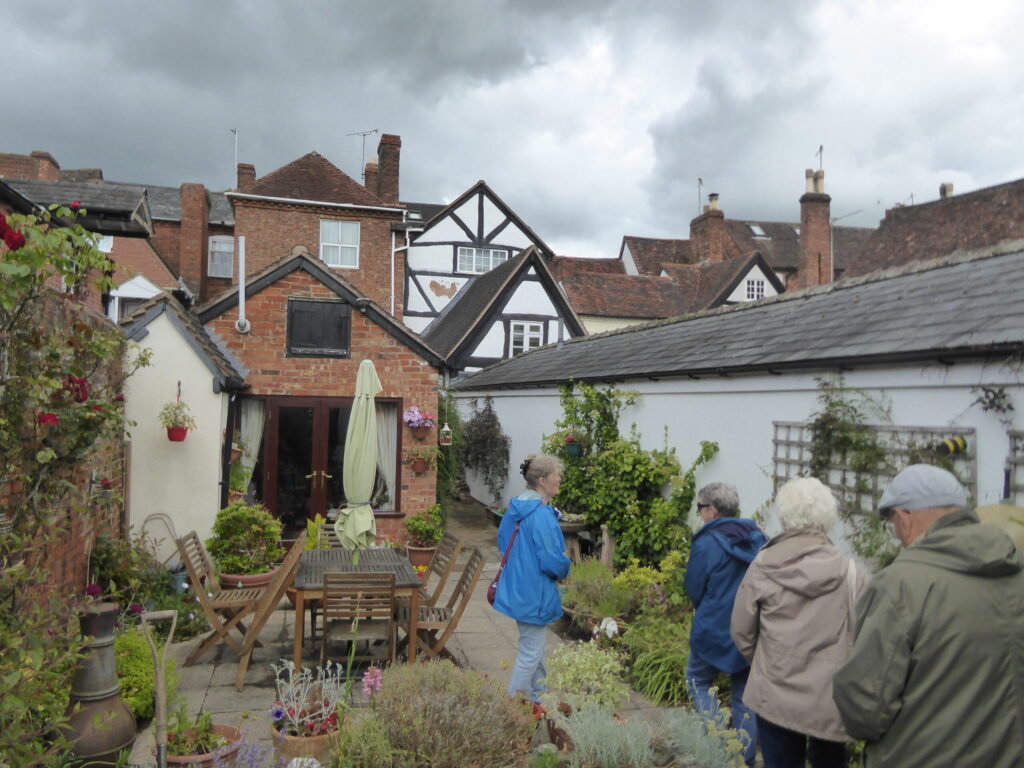
One of Pershore’s best known residents is 1980s pop star, and voice of the Tellytubbies, Toyah Wilcox. She and her husband, musician Robert Fripp, live in a Georgian house on Bridge Street with their recording studio next door. Their gardens back onto the River Avon and in January she posted a video of the floods coming most of the way up her garden.
Pershore’s heritage is supported by an active programme of promotional events including the River Festival in July, the Plum Festival in August, and a jazz festival. These events are coordinated by the Pershore Events and Festivals Association, a community organisation supporting the local businesses and people in the town.
The highlight of the town is Pershore Abbey, the remains of a huge Norman abbey church. It sits in a beautiful park with sculpture and interpretation boards.

Pershore Abbey was founded in 689 AD by King Oswold, although the remaining buildings date back to the 13th Century. Like Coventry, the abbey suffered at the hands of King Henry VIII and the dissolution of the monasteries. The nave of what would have been an immense Abbey Church was demolished, with the stone used for other buildings in the town.
But fortunately, some rich townspeople purchased the remaining tower, choir, transept and chancel for £400 and put it back into use as a parish church. The Abbey had a long and fascinating history, including its Victorian make-over in the hands of Giles Gilbert-Scott.
It holds a fascinating collection of stained glass, ancient stonework and monuments as well as a unique bell ringing platform, suspended in the tower.
What remains today is a unique reminder of what the early Coventry Cathedral would have been like.
We had tea in St Andrews Church, a de-consecrated church now used as a community centre associated with the abbey.
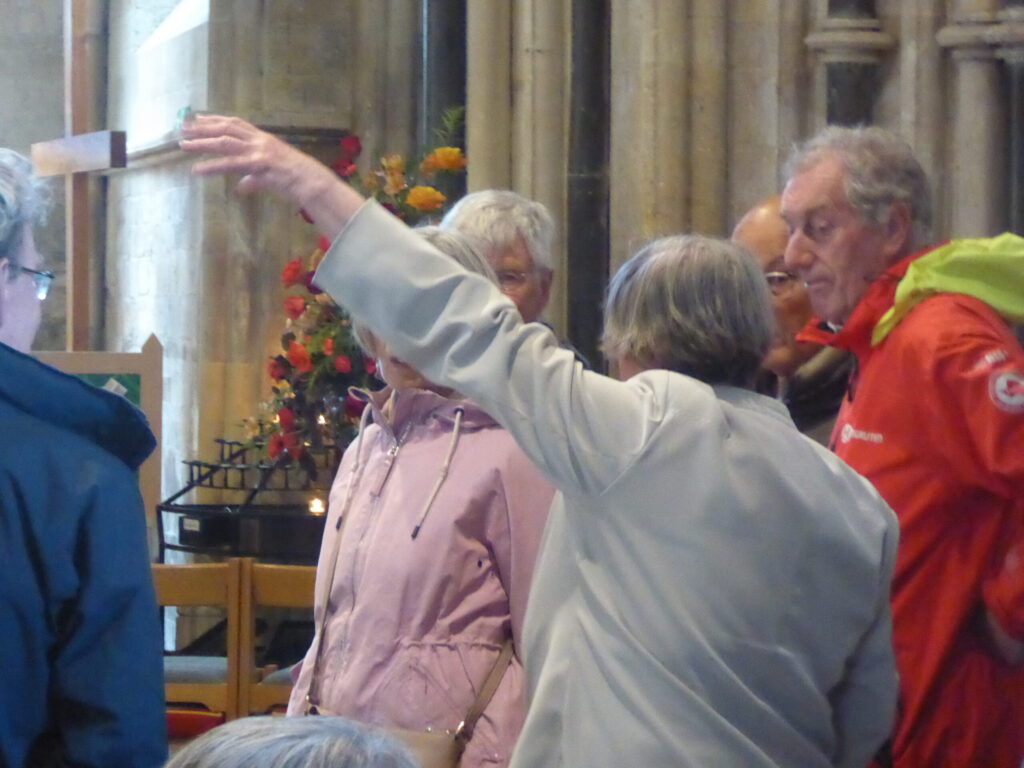
Other than Toyah, perhaps the most famous residents of the Pershore today are a family of peregrines nesting in the tower of the abbey. They have become well known in Worcestershire and now have their own TV channel. You can watch them live.
Somewhat worryingly, one of the two chicks chose to take a closer look at its Coventry visitors and fell from the nest onto the ground below. After we left the chick was taken back up onto the roof where she eventually returned to the nest/platform. The following day she tried this flying malarkey again and ended up in a tree as you can see in this photograph.
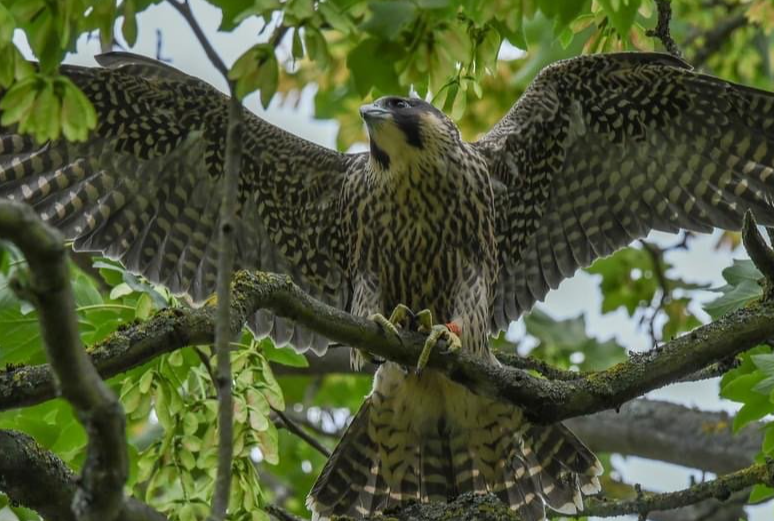
After all that excitement, our final treat was to walk back to our cars alongside a serpentine, or crinkle crankle, wall. It wasn’t clear why the wall was here, but serpentine walls enable a stable structure to be created with a single thickness of brick. The corrugations are good for growing fruit trees, providing protection from frost.
Our grateful thanks to our hosts, the Pershore Civic Society, for a wonderful visit to their enchanting little town. An exchange visit is planned for next year.
